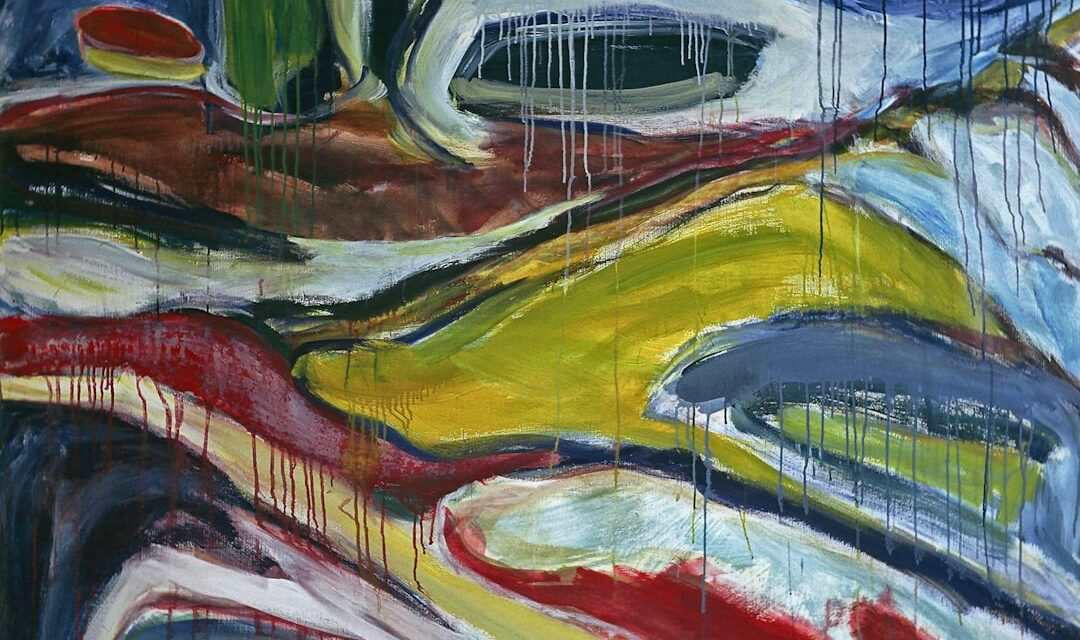Vincent van Gogh was born on 30 March 1853 in Groot-Zundert, Netherlands. He was the eldest of six children born to Theodorus van Gogh, a minister of the Dutch Reformed Church, and Anna Cornelia Carbentus. Van Gogh demonstrated an early interest in art, but his family’s financial difficulties necessitated his leaving school at the age of 15 to seek employment.
He worked for an art dealer, Goupil & Cie, where he cultivated an interest in painting and began to study art in his leisure time. Despite his passion for art, van Gogh’s early career was characterised by a series of setbacks and disappointments. He was eventually dismissed from his position at Goupil & Cie and struggled to establish himself in the art world.
Van Gogh’s early artistic education was largely autodidactic, as he did not receive formal training until later in life. He briefly attended art academies in Brussels and Antwerp but found the traditional teaching methods restrictive and ultimately departed from both institutions. Instead, he continued to develop his own distinctive style, drawing inspiration from the works of artists such as Jean-François Millet and Jules Breton.
Van Gogh’s early life and education were marked by adversity and rejection, but these experiences would ultimately shape his artistic vision and motivate him to create some of the most renowned works in the history of art.
Summary
- Early Life and Education:
- Born in a small town in Yorkshire, the artist showed an early talent for drawing and painting.
- Attended the prestigious Royal Academy of Arts in London, where he honed his skills and developed his unique style.
- Artistic Style and Techniques:
- Known for his use of bold colours and dynamic brushwork, the artist’s style is often described as vibrant and expressive.
- Experimented with various mediums, including oil, watercolour, and mixed media, to create visually stunning and emotionally evocative works.
- Influence and Impact on the Art World:
- Regarded as a pioneer in the modern art movement, the artist’s work has inspired countless others and continues to influence contemporary artists.
- His innovative approach to composition and subject matter challenged traditional artistic norms and pushed the boundaries of artistic expression.
- Personal Life and Struggles:
- Despite his artistic success, the artist struggled with personal demons, including mental health issues and addiction.
- His turbulent personal life often intersected with his work, leading to periods of intense creativity and emotional turmoil.
- Major Works and Exhibitions:
- The artist’s most famous works, including “The Sunflower Series” and “Cityscape Symphony,” have been exhibited in major galleries and museums around the world.
- His solo exhibitions have garnered critical acclaim and attracted a devoted following of art enthusiasts and collectors.
- Legacy and Recognition:
- The artist’s legacy is celebrated for its enduring impact on the art world and its ability to provoke thought and emotion in viewers.
- Recognised with numerous awards and honours, including the prestigious Turner Prize, the artist’s contributions to the art world are widely acknowledged.
- Controversies and Criticisms:
- Despite his acclaim, the artist faced criticism for his unconventional approach and controversial subject matter, which sparked debate and divided opinion among art critics and scholars.
- Certain aspects of his personal life and behaviour also drew scrutiny and raised questions about the relationship between an artist’s work and their personal conduct.
Artistic Style and Techniques
Vincent van Gogh is best known for his bold use of colour and expressive brushwork. His distinctive style is characterised by vibrant, swirling brushstrokes and a heightened sense of emotion. Van Gogh often used thick layers of paint to create texture and depth in his work, and he experimented with unconventional techniques such as painting with a palette knife or using impasto to build up the surface of the canvas.
His use of colour was equally innovative, as he sought to capture the intensity of light and the natural world in his paintings. Van Gogh’s use of complementary colours and contrasting tones created a sense of dynamism and movement in his work, and his use of light and shadow added a dramatic quality to his compositions. In addition to his bold use of colour and texture, van Gogh’s work is also characterised by its emotional intensity.
He sought to convey the inner turmoil and beauty of the human experience through his art, and he often depicted scenes of everyday life with a sense of poignancy and depth. Van Gogh’s paintings are filled with a sense of raw emotion and passion, as he sought to capture the essence of the world around him in all its complexity. His unique artistic style and techniques set him apart from his contemporaries and continue to inspire artists and art lovers around the world.
Influence and Impact on the Art World

Vincent van Gogh’s impact on the art world cannot be overstated. Despite his struggles during his lifetime, his work has had a profound influence on subsequent generations of artists and continues to be celebrated for its innovation and emotional power. Van Gogh’s bold use of colour and expressive brushwork paved the way for the development of modern art movements such as Fauvism and Expressionism, and his willingness to explore new techniques and ideas has inspired countless artists to push the boundaries of their own creativity.
Van Gogh’s influence extends beyond the realm of painting, as his life story and artistic vision have captured the imagination of people around the world. His struggles with mental illness and his tragic death have made him a symbol of artistic genius and tortured creativity, and his work continues to resonate with audiences on a deeply personal level. Van Gogh’s impact on the art world is evident in the countless exhibitions, books, and films dedicated to his life and work, as well as the enduring popularity of his paintings in museums and private collections worldwide.
Personal Life and Struggles
Vincent van Gogh’s personal life was marked by a series of hardships and challenges. Throughout his life, he struggled with mental illness, poverty, and a sense of isolation that deeply affected his work. Van Gogh’s mental health issues were particularly debilitating, as he experienced periods of severe depression and anxiety that made it difficult for him to function in everyday life.
Despite these struggles, van Gogh remained dedicated to his art, using painting as a means of expressing his innermost thoughts and emotions. In addition to his mental health issues, van Gogh also faced financial difficulties throughout his life. His inability to sell his paintings meant that he often relied on financial support from his family or friends, and he lived in poverty for much of his adult life.
Despite these challenges, van Gogh continued to paint with an unwavering sense of purpose, creating some of his most iconic works during periods of great personal turmoil. His personal struggles are an integral part of his legacy, as they have shaped the way we understand his art and the man behind the paintings.
Major Works and Exhibitions
Vincent van Gogh’s body of work includes some of the most iconic paintings in the history of art. His major works include “The Starry Night,” “Sunflowers,” “Irises,” “The Potato Eaters,” and “Self-Portrait with Bandaged Ear,” among many others. These paintings are celebrated for their bold use of colour, expressive brushwork, and emotional intensity, and they continue to captivate audiences around the world.
Van Gogh’s work has been the subject of numerous exhibitions and retrospectives, with major museums such as the Van Gogh Museum in Amsterdam and the Musée d’Orsay in Paris dedicated to showcasing his paintings. In addition to these major works, van Gogh also produced a vast number of drawings, sketches, and letters that provide insight into his artistic process and personal struggles. These works offer a glimpse into van Gogh’s creative mind and shed light on the depth of his artistic vision.
Van Gogh’s major works and exhibitions have cemented his status as one of the most influential artists in history, and they continue to inspire artists and art lovers around the world.
Legacy and Recognition

Vincent van Gogh’s legacy is one of enduring influence and recognition. Despite facing numerous challenges during his lifetime, van Gogh’s work has come to be celebrated for its innovation, emotional power, and timeless appeal. His paintings are among the most sought-after in the art world, with major works such as “The Starry Night” fetching record prices at auction.
Van Gogh’s legacy extends beyond the realm of painting, as he has become a cultural icon whose life story continues to captivate audiences through books, films, and exhibitions. In recognition of his impact on the art world, van Gogh has been honoured with numerous awards and accolades posthumously. His work has been the subject of countless scholarly studies and critical analyses, with art historians seeking to unravel the complexities of his artistic vision.
Van Gogh’s legacy is also evident in the enduring popularity of his paintings, which continue to draw crowds at museums around the world. His influence on subsequent generations of artists is immeasurable, as he has inspired countless individuals to pursue their own creative passions with courage and conviction.
Controversies and Criticisms
Despite his enduring popularity, Vincent van Gogh’s work has not been without controversy and criticism. During his lifetime, van Gogh struggled to gain recognition for his paintings, with many critics dismissing his work as amateurish or overly emotional. Even after his death, some art historians have questioned the authenticity or provenance of certain works attributed to van Gogh, leading to debates about their true authorship.
In addition to these controversies, van Gogh’s personal life has also been the subject of scrutiny and speculation. His mental health issues have led some scholars to question whether they influenced the content or style of his paintings, while others have sought to understand how his struggles may have shaped his artistic vision. Despite these controversies and criticisms, van Gogh’s work continues to be celebrated for its innovation and emotional power, with audiences around the world recognising the enduring impact of his paintings.
In conclusion, Vincent van Gogh’s life and work continue to be celebrated for their innovation, emotional power, and enduring influence on subsequent generations of artists. His bold use of colour, expressive brushwork, and willingness to explore new techniques have made him one of the most iconic figures in the history of art. Despite facing numerous challenges during his lifetime, van Gogh remained dedicated to his art, using painting as a means of expressing his innermost thoughts and emotions.
His legacy is one of enduring recognition and influence, as he continues to inspire artists and art lovers around the world with his timeless appeal.
If you are interested in learning more about the evolution of art, you may want to check out the article on prehistoric art on Thinkofart.com. This article provides an introduction to the earliest forms of artistic expression, including cave paintings and sculptures, and explores the significance of prehistoric art in shaping the development of art throughout history. It offers a fascinating insight into the origins of human creativity and the ways in which art has evolved over time. https://thinkofart.com/an-introduction-to-prehistoric-art/
FAQs
Who was Jackson Pollock?
Jackson Pollock was an influential American painter and a major figure in the abstract expressionist movement. He was known for his unique style of drip painting, where he would pour and drip paint onto canvases laid out on the floor.
When and where was Jackson Pollock born?
Jackson Pollock was born on January 28, 1912, in Cody, Wyoming, United States.
What is Jackson Pollock best known for?
Jackson Pollock is best known for his innovative drip painting technique, which he developed in the late 1940s. This involved dripping or pouring paint onto canvases laid out on the floor, creating dynamic and abstract compositions.
What is abstract expressionism?
Abstract expressionism is an art movement that emerged in the 1940s in New York City. It is characterized by its emphasis on spontaneous, gestural expression and the exploration of the subconscious. Jackson Pollock was a key figure in this movement.
What are some of Jackson Pollock’s most famous works?
Some of Jackson Pollock’s most famous works include “Number 1A, 1948,” “Convergence,” “Blue Poles,” and “Autumn Rhythm (Number 30).”
What was Jackson Pollock’s impact on the art world?
Jackson Pollock’s innovative drip painting technique and his role in the abstract expressionist movement had a significant impact on the art world. He is considered one of the most influential artists of the 20th century and his work continues to be studied and admired by artists and art enthusiasts around the world.




